INTRODUCTION
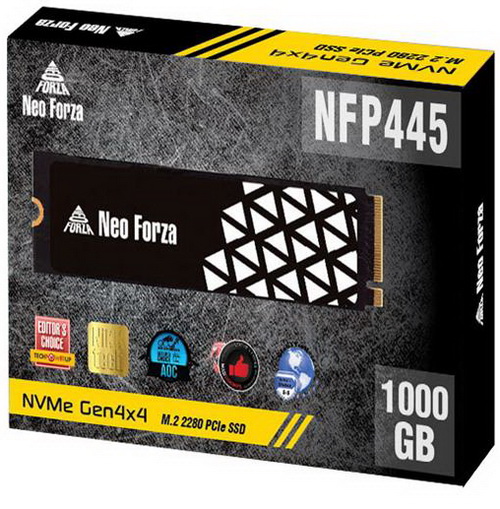
With Christmas less than a month away many people have begun contemplating how to spend their money and at least the ones who reach out to me are either planning on getting a complete PC or gathering parts to build their very own. In regards to those who plan on getting a complete system unfortunately there's not much i can say, simply put i can't recommend any system builder that i have zero experience with. As for those who plan on getting parts to build their very own system, one of the questions I’ve heard more than once recently is whether or not there are budget-friendly PCIe 4.0 Gen4 SSDs in the market and even though i do have some in my charts i did look around for more and so today with me i have the latest NFP445 1TB model by Neo Forza.
We are a professional team, studying in computer memory and storage devices industry for more than 10 years. In order to meet the rising demand on speed and capacity of the high-end gaming market players, we created Neo Forza, a new generation of ultra-standard overclocking module, SSD and other related storage device designing brand. Neo represents from virtual to reality, showing our core value for product innovation. Forza shows our strength and determination to meet gamers every need. Neo Forza possess strong resources, focus on core technology. From research & design, specific production to exceed the testing benchmark; Neo Forza keep pushing over technical boundary, providing top-notch performance and quality, providing gamers / game players extraordinary using experience.
The NFP445 M.2 PCIe 4.0 Gen4 SSD by Neo Forza is currently available in just 500GB/1TB capacities and it's actually also quite unique since it uses a low-power NVMe v1.4 NAND controller I’ve never seen to date, not up close anyways. So, this model uses the 4-channel TC2200 PCIe Gen4 NVMe DRAMless NAND flash controller by Tenafe which Neo Forza has paired with 128-layer 3D TLC NAND flash (4 modules for the 1TB that i have here with me) to achieve performance numbers of up to 4700-4500MB/s in reads and writes respectively. The TC2200 NAND flash controller packs various technologies including the Host Memory Buffer (HMB) architecture (basically takes up a fraction of your PC's system memory to cache mapping tables - only supported on versions of Windows 10/11 launched from 2019 and beyond), end-to-end data protection, FlexLDPC (4KB LDPC, low-density parity check) error-correction, SRAM SECDED protection, programmable RAID, SLC cache, TRIM, NCQ, AES 256-bit encryption supports TCG opal. Neo forza finally reports an TBW of 350 for the 500GB model and 640 for the 1TB model and covers both of them with a 5-year limited warranty.
SPECIFICATIONS AND FEATURES

THE NFP445 1TB
Neo Forza uses a small box to ship the NFP445 inside the front of which has a product picture, their logo and various awards (including my own which however was for its faster brother the NFP425).
The warranty, country of origin and electrical specifications are all printed at the rear of the box.
As always, the drive follows the typical M.2 2280 form factor and has a sticker with the company name on it.
The sticker seems to be made out of copper so it should help with temperatures (especially since this isn't a high-performance model).

 Under the sticker we find the Tenafe NAND flash controller and 4 128-layer 3D TLC NAND flash modules.
Under the sticker we find the Tenafe NAND flash controller and 4 128-layer 3D TLC NAND flash modules.
This is a single side model so the other side just has a sticker with the part number, capacity and barcode.
TEST BED
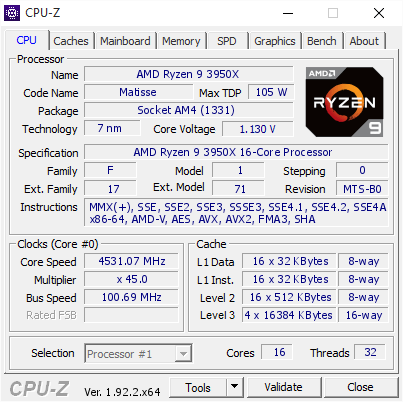

TESTING METHODOLOGY
Not long after I first started testing SSDs back in 2008, I concluded that it's almost impossible for any single benchmark suite to accurately measure their performance and that's why in certain benchmark suites we see amazing read/write performance numbers with some drives while in others things are quite different. The reason behind this is that some benchmarking suites are configured to read and write random chunks of data while others read and write constant (sequential) ones. So that's why i always use a very wide selection of benchmarking suites including AIDA64, HD Tach RW, HD Tune Pro, Crystal Disk Mark, Sisoftware Sandra Pro, AS SSD, IOmeter and ATTO. To get the most accurate results each test gets repeated a total of 6 times with the average performance numbers recorded into the charts*/****. Also, as of February 25th 2015 our results will also include the Storage Networking Industry Association’s (SNIA) IOMeter tests. These tests include a 12 Hour write test used to “simulate” performance degradation over time and a mixed workload test which basically shows what you can expect when using an SSD continuously for roughly two hours. Unfortunately, due to the time required for these tests they get repeated a total of 3 times and not 6 as the above.
Many people have made inquiries about our charts in the past so once again please do keep in mind that the Charts have the average performance numbers of each drive recorded and not the peak (highest) ones. Also, although every single one of these programs can help potential buyers choose the right drive for their needs you should also remember that from any kind of benchmark up to real world usage the gap is not small (and usually most differences will go unnoticed by most people). All tests were performed in a fresh Windows 10 Pro x64 installation complete with every update up to the date of this review.
* Since November 2018 the SSD comparison charts have been divided to 2.5” and M.2 models to reduce their growing size.
** Unless stated otherwise the Ryzen 9 3950x based Test Rig used for M.2 Gen 4 SSD reviews is not located in the lab.
*** As of January 2021 for Gen 3x4 models I’ll be using the Core i9-7980XE test rig (after numerous tests the up to 6% difference in read & write performance compared to the i7-6700 system simply wasn’t enough to justify having an extra test rig around).
**** Since February 2022 M.2 NVMe Gen3 and Gen4 SSD drives are placed in different charts.
TEST RESULTS - AIDA64 / ATTO

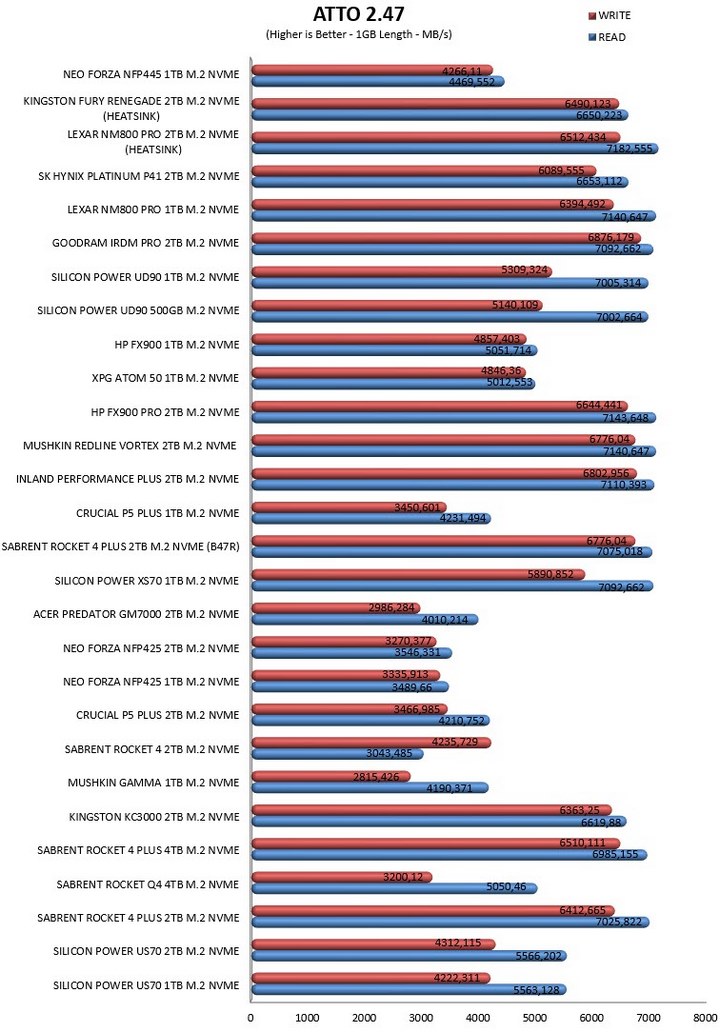
TEST RESULTS - HD TACH RW / HD TUNE PRO

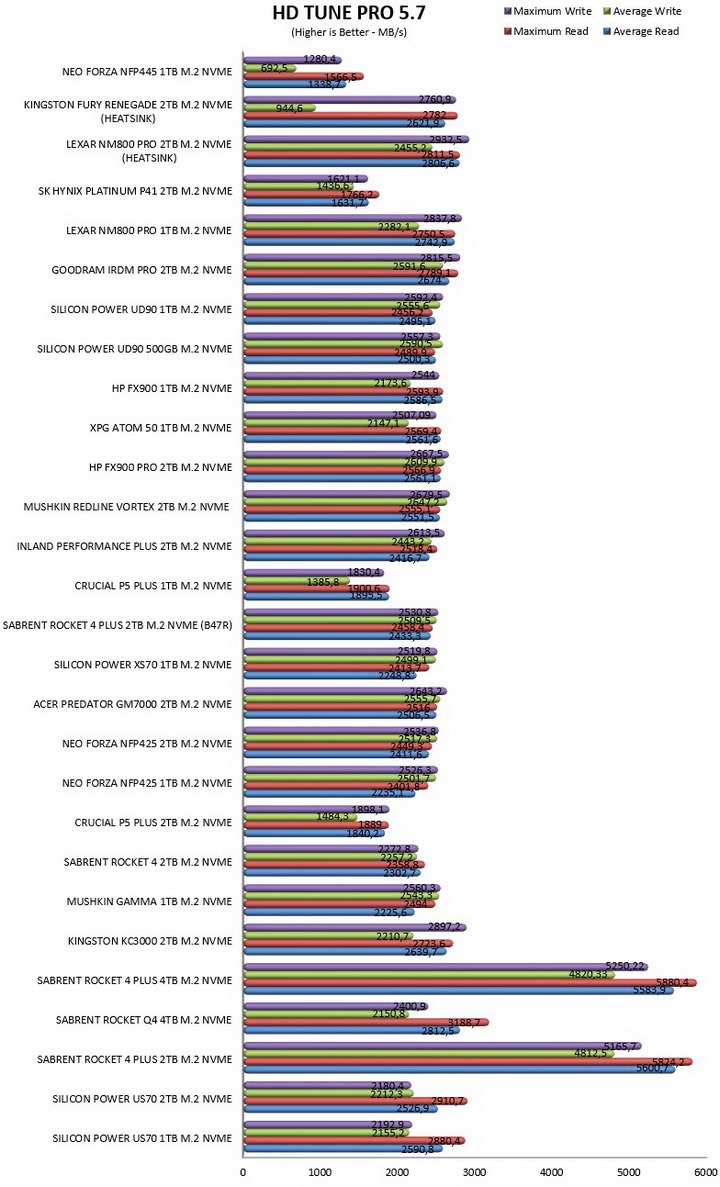
TEST RESULTS - SISOFTWARE SANDRA PRO / CRYSTAL DISK MARK


TEST RESULTS - AS SSD / IOMETER
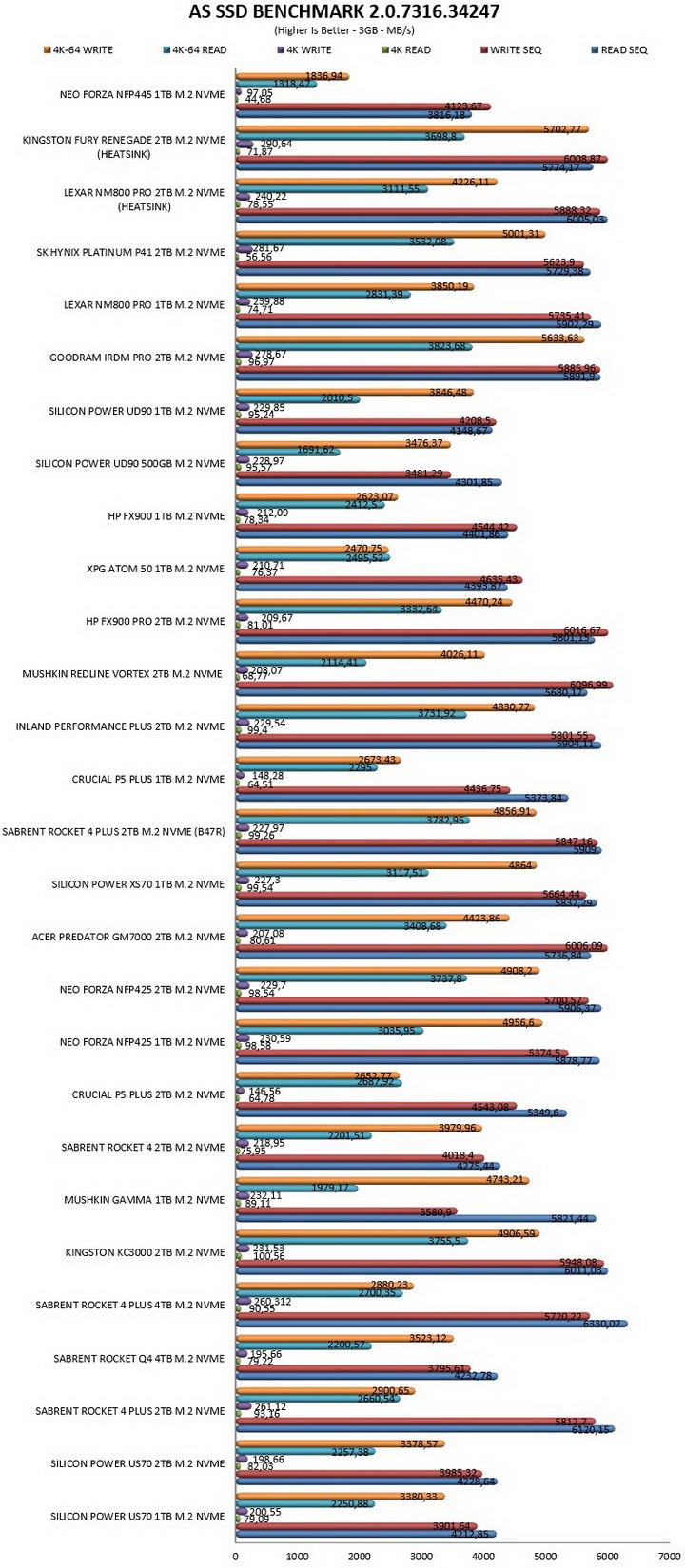
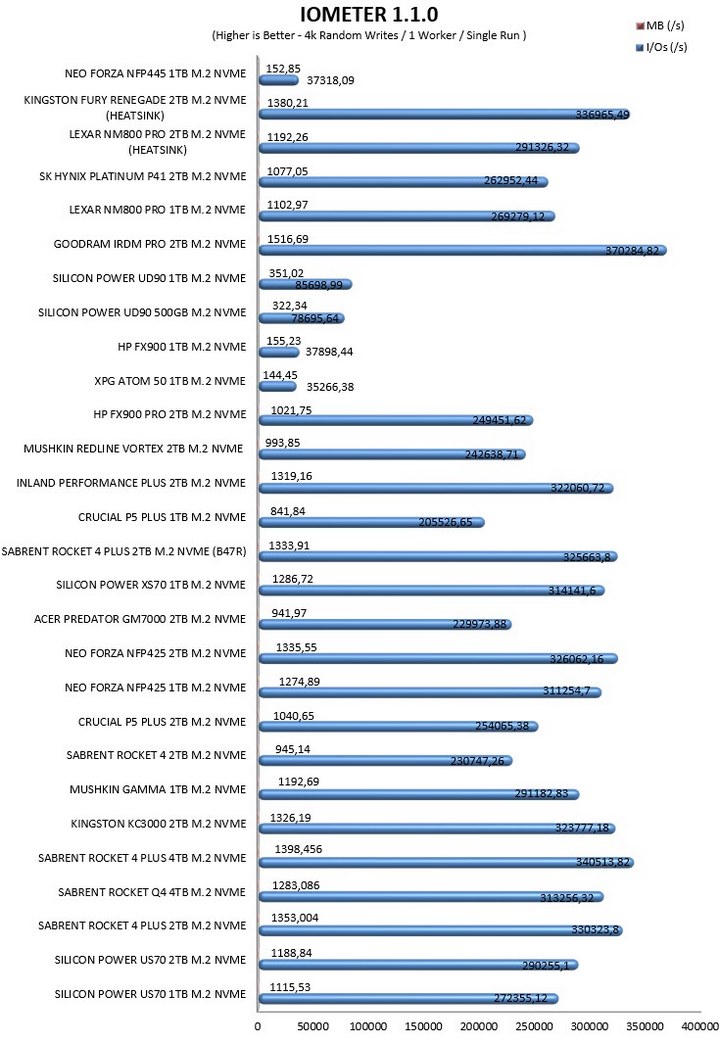
TEST RESULTS - IOMETER SNIA

CONCLUSION

When I finished testing the NFP445 1TB PCIe 4.0 Gen4 M.2 NVMe SSD by Neo Forza just one thought came to mind, why? You see at first the low performance of the drive (for a Gen4 model) made it initially really hard for me to justify its existence. This is clearly the slowest PCIe 4.0 Gen4 SSD in my charts but aside being the problem it's performance is also the answer to my question. So even though this is the slowest Gen4 drive it’s still slightly faster compared to even some of the best Gen3 models so in a way it does make sense to release one such model, at least as long as the price is right.
With a very tempting MSRP which as far as I can tell is currently set at around USD100 the sole issue left for potential buyers is to actually find the NFP445 1TB and at least for now that doesn’t seem to be possible. Still if you’re looking for a budget-friendly 1TB Gen4 SSD, you’re not in a hurry and you’re fine with its performance levels then I certainly do recommend waiting until it becomes available somewhere near you.
PROS
- Overall Performance (Up to 4700MB/s Read & 4500MB/s Write)
- Copper Sticker
- 5 Year Limited Warranty
- Price (For Some)
CONS
- Performance (Compared To Other Gen4 Drives)
- Current Availability
- Available Capacities

 O-Sense
O-Sense





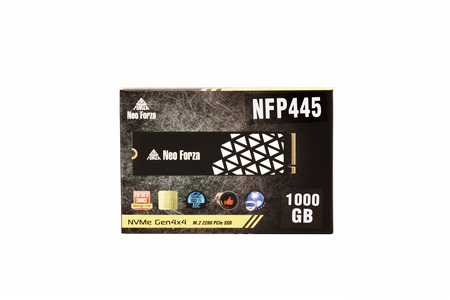








.png)

